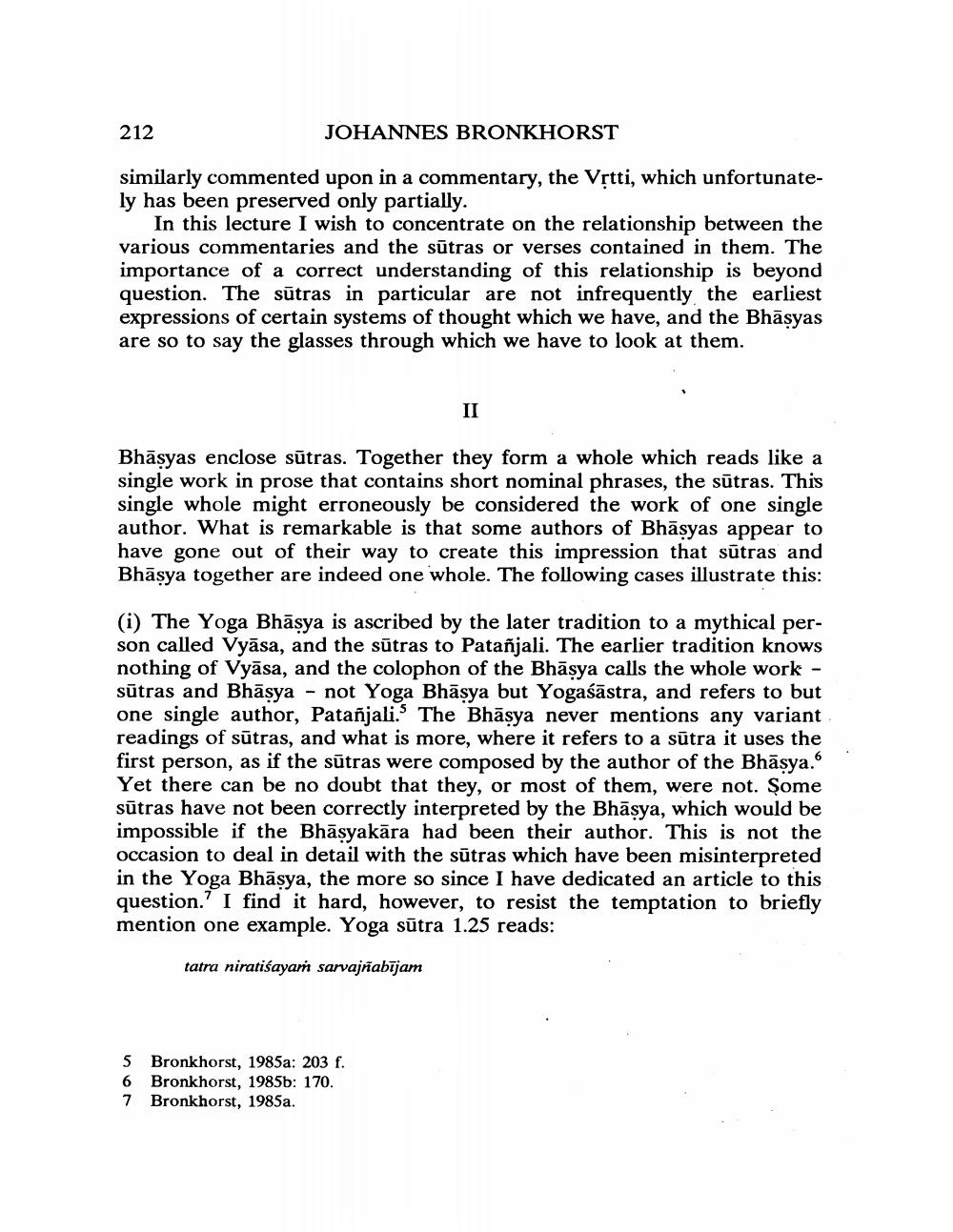Book Title: Two Literary Conventions Of Classical India Author(s): Johannes Bronkhorst Publisher: Johannes Bronkhorst View full book textPage 3
________________ 212 JOHANNES BRONKHORST similarly commented upon in a commentary, the Vrtti, which unfortunately has been preserved only partially. In this lecture I wish to concentrate on the relationship between the various commentaries and the sūtras or verses contained in them. The importance of a correct understanding of this relationship is beyond question. The sūtras in particular are not infrequently, the earliest expressions of certain systems of thought which we have, and the Bhāsyas are so to say the glasses through which we have to look at them. Bhāsyas enclose sūtras. Together they form a whole which reads like a single work in prose that contains short nominal phrases, the sūtras. This single whole might erroneously be considered the work of one single author. What is remarkable is that some authors of Bhāsyas appear to have gone out of their way to create this impression that sūtras and Bhāsya together are indeed one whole. The following cases illustrate this: (i) The Yoga Bhāsya is ascribed by the later tradition to a mythical person called Vyāsa, and the sūtras to Patañjali. The earlier tradition knows nothing of Vyāsa, and the colophon of the Bhāsya calls the whole work - sūtras and Bhāsya - not Yoga Bhāsya but Yogaśāstra, and refers to but one single author, Patañjali. The Bhāsya never mentions any variant readings of sūtras, and what is more, where it refers to a sūtra it uses the first person, as if the sūtras were composed by the author of the Bhāsya. Yet there can be no doubt that they, or most of them, were not. Some sūtras have not been correctly interpreted by the Bhāsya, which would be impossible if the Bhāsyakāra had been their author. This is not the occasion to deal in detail with the sūtras which have been misinterpreted in the Yoga Bhāsya, the more so since I have dedicated an article to this question.? I find it hard, however, to resist the temptation to briefly mention one example. Yoga sūtra 1.25 reads: tatra niratiśaya sarvajñabījam 5 6 7 Bronkhorst, 1985a: 203 f. Bronkhorst, 1985b: 170. Bronkhorst, 1985a.Page Navigation
1 2 3 4 5 6 7 8 9 10 11 12 13 14 15 16 17 18
